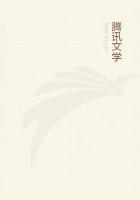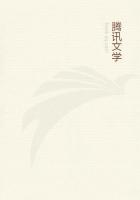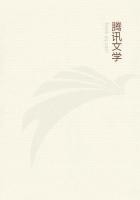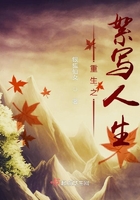Fragrant colonies of this little plant cuddled close to the moss of cool, northern peat bogs draw forth our admiration when we go orchid hunting in early summer.A similar species, the LIVER-LEAFWINTERGREEN (P.asarifolia), with shining, not dull, leaves and rose-colored flowers, not to mention minor differences, is likewise found in swamps and wet woods.These two wintergreens, formerly counted mere varieties of the white-flowered rotundifolia, a lover of dry woods, have now been given specific individuality by later-day systematists.Short-lipped bees and flies may be detected in the act of applying their mouths to the orifices of the anthers through which pollen is shed, and some must be carried to the stigma of another flower.
PIPSISSEWA; PRINCE'S PINE
(Chimaphila umbellata) Wintergreen family Flowers - Flesh-colored, or pinkish, fragrant, waxy, usually with deep pink ring around center, and the anthers colored; about 1/2in.across; several flowers in loose, terminal cluster.Calyx 5-cleft; corolla of 5 concave, rounded, spreading petals; 10stamens, the filaments hairy style short, conical, with a round stigma.Stem: Trailing far along ground, creeping, or partly subterranean, sending up sterile and flowering branches 3 to 10in.high.Leaves: Opposite or in whorls, evergreen, bright, shining, spatulate to lance-shaped, sharply saw-edged.
Preferred Habitat - Dry woods, sandy leaf-mould.
Flowering Season - June-August.
Distribution - British Possessions and the United States north of Georgia from the Atlantic to the Pacific.Also Mexico, Europe, and Asia.
A lover of winter indeed (cheima = winter and phileo = to love)is the prince's pine, whose beautiful dark leaves keep their color and gloss in spite of snow and intense cold.A few yards of the trailing stem, easily ripped from the light soil of its woodland home, make a charming indoor decoration, especially when the little brown seed-cases remain.Few flowers are more suggestive of the woods than these shy, dainty, deliciously fragrant little blossoms.
The SPOTTED WINTERGREEN, or PIPSISSEWA (C.maculata), closely resembles the prince's pine, except that its slightly larger white or pinkish flowers lack the deep pink ring; and the lance-shaped leaves, with rather distant saw-teeth, are beautifully mottled with white along the veins.When we see short-lipped bees and flies about these flowers, we may be sure their pollen-covered mouths come in contact with the moist stigma on the summit of the little top-shaped style, and so effect cross-fertilization.
WILD HONEYSUCKLE; PINK, PURPLE, or WILD AZALEA; PINXTER-FLOWER(Azalea nudiflora) Heath family Flowers - Crimson pink, purplish or rose pink, to nearly white, 11/2 to 2 in.across, faintly fragrant, clustered, opening before or with the leaves, and developed from cone-like, scaly brown buds.Calyx minute, 5-parted; corolla funnel-shaped, the tube narrow, hairy, with 5 regular, spreading lobes; 5 long red stamens; 1 pistil, declined, protruding.Stem: Shrubby, usually ****** below, but branching above, 2 to 6 ft.high.Leaves:
Usually clustered, deciduous, oblong, acute at both ends, hairy on midrib.
Preferred Habitat - Moist, rocky woods, or dry woods and thickets.
Flowering Season - April-May.
Distribution - Maine to Illinois, and southward to the Gulf.
Woods and hillsides are glowing with fragrant, rosy masses of this lovely azalea, the Pinxter-bloem or Whitsunday flower of the Dutch colonists, long before the seventh Sunday after Easter.
Among our earliest exports, this hardy shrub, the swamp azalea, and the superb flame-colored species of the Alleghanies, were sent early in the eighteenth century to the old country, and there crossed with A.Pontica of southern Europe by the Belgian horticulturalists, to whom we owe the Ghent azaleas, the final triumphs of the hybridizer, that glorify the shrubberies on our own lawns to-day.The azalea became the national flower of Flanders.These hardy species lose their leaves in winter, whereas the hothouse varieties of A.Indica, a native of China and Japan, have thickish leaves, almost if not quite evergreen.Afew of the latter stand our northern winters, especially the pure white variety now quite commonly planted in cemetery lots.In that delightfully enthusiastic little book, "The Garden's Story,"Mr.Ellwanger says of the Ghent azalea "In it I find a charm presented by no other flower.Its soft tints of buff, sulphur, and primrose; its dazzling shades of apricot, salmon, orange, and vermilion are always a fresh revelation of color.They have no parallel among flowers, and exist only in opals, sunset skies, and the flush of autumn woods." Certainly American horticulturists were not clever in allowing the industry of raising these plants from our native stock to thrive on foreign soil.
Naturally the azalea's protruding style forms the most convenient alighting place for the female bee, its chief friend; and there she leaves a few grains of pollen, brought on her hairy underside from another flower, before again dusting herself there as she crawls over the pretty colored anthers on her way to the nectary.
Honey produced from azaleas by the hive bee is in bad repute.All too soon after fertilization the now useless corolla slides along to the tip of the pistil, where it swings a while before dropping to earth.

